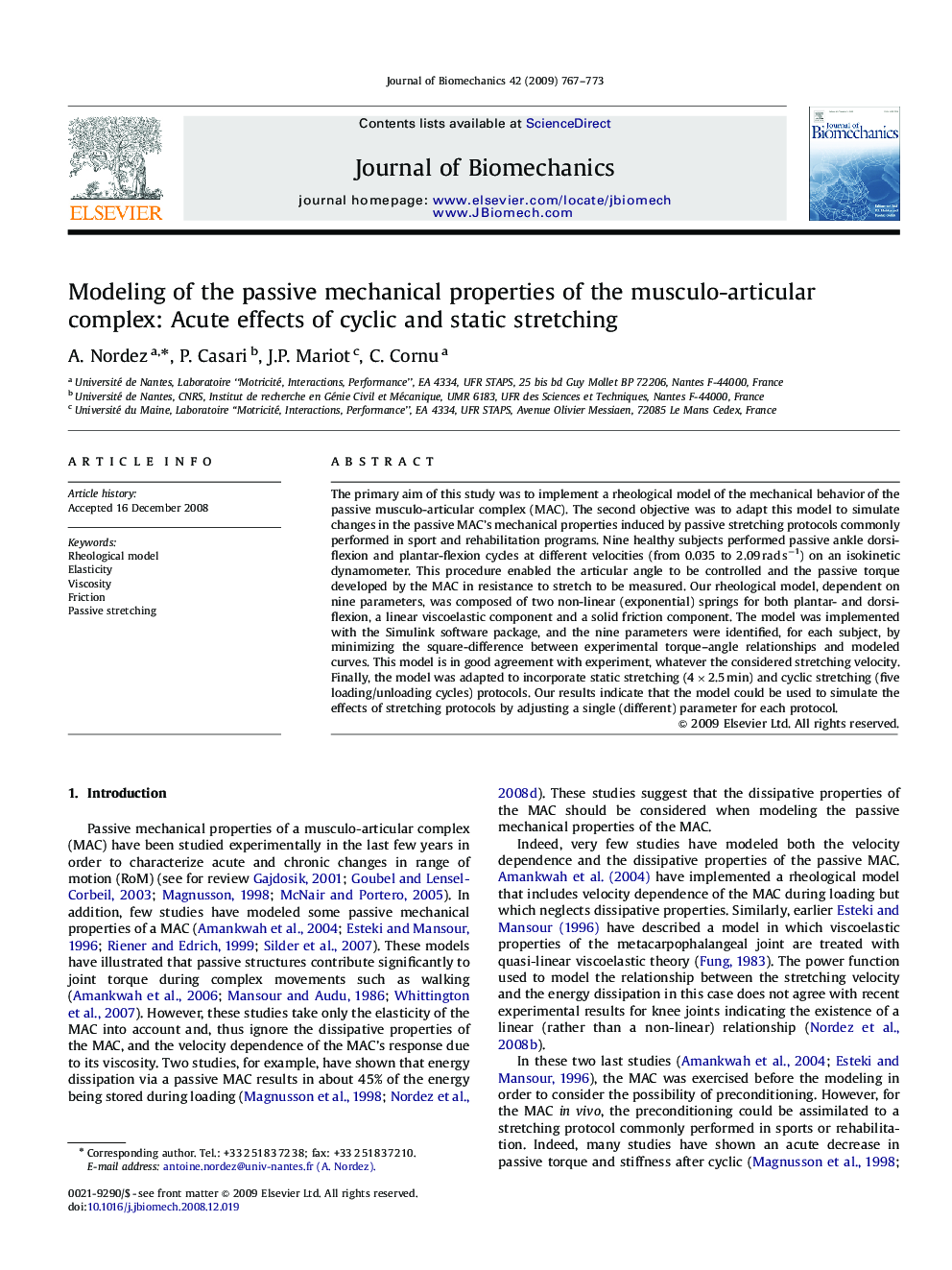| Article ID | Journal | Published Year | Pages | File Type |
|---|---|---|---|---|
| 872935 | Journal of Biomechanics | 2009 | 7 Pages |
The primary aim of this study was to implement a rheological model of the mechanical behavior of the passive musculo-articular complex (MAC). The second objective was to adapt this model to simulate changes in the passive MAC's mechanical properties induced by passive stretching protocols commonly performed in sport and rehabilitation programs. Nine healthy subjects performed passive ankle dorsi-flexion and plantar-flexion cycles at different velocities (from 0.035 to 2.09 rad s−1) on an isokinetic dynamometer. This procedure enabled the articular angle to be controlled and the passive torque developed by the MAC in resistance to stretch to be measured. Our rheological model, dependent on nine parameters, was composed of two non-linear (exponential) springs for both plantar- and dorsi-flexion, a linear viscoelastic component and a solid friction component. The model was implemented with the Simulink software package, and the nine parameters were identified, for each subject, by minimizing the square-difference between experimental torque–angle relationships and modeled curves. This model is in good agreement with experiment, whatever the considered stretching velocity. Finally, the model was adapted to incorporate static stretching (4×2.5 min) and cyclic stretching (five loading/unloading cycles) protocols. Our results indicate that the model could be used to simulate the effects of stretching protocols by adjusting a single (different) parameter for each protocol.
